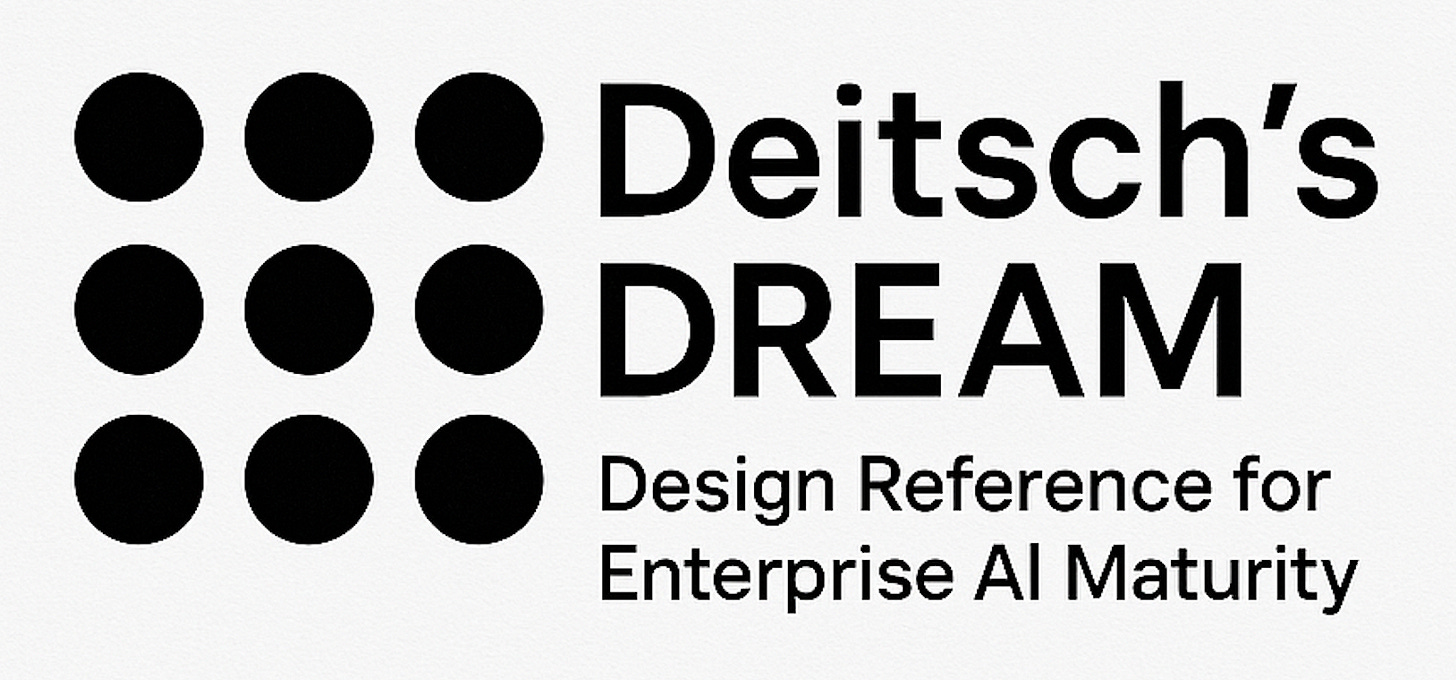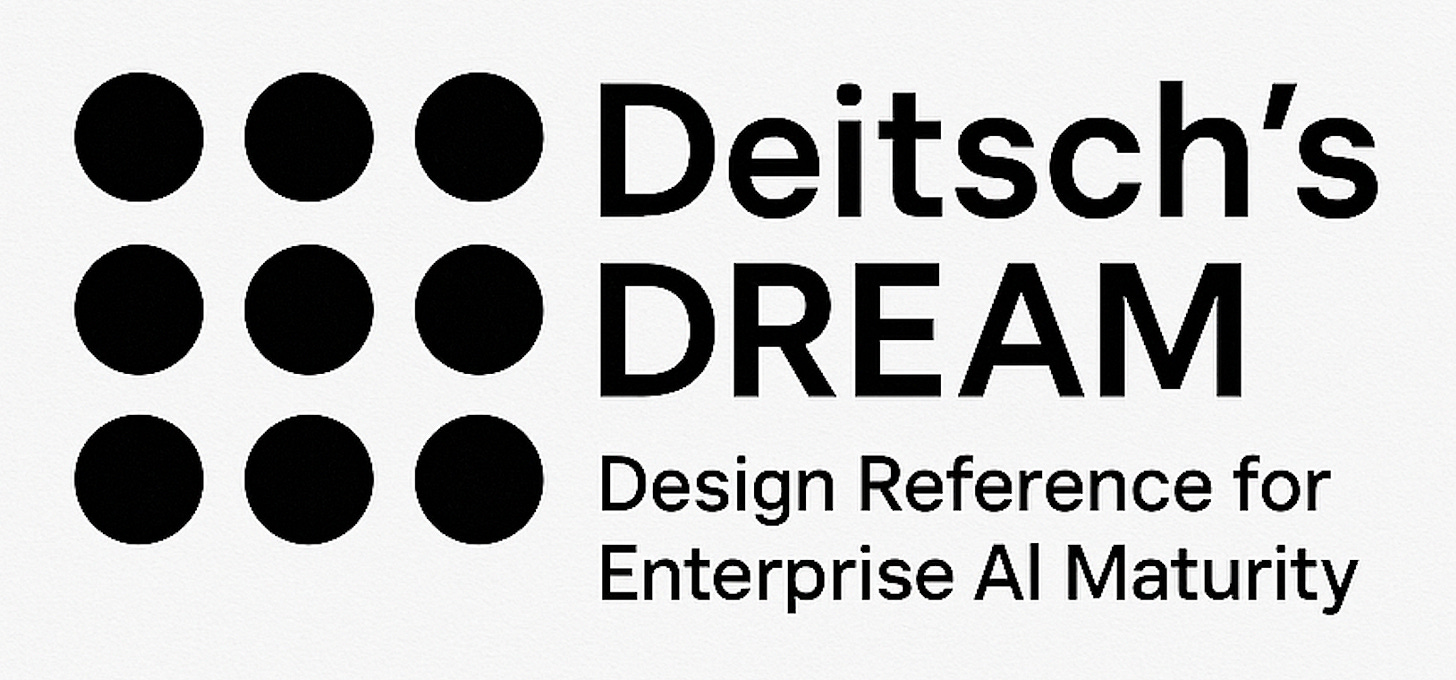Agent-to-Agent Communication: Can Use Cases Warrant Two AIs?
When Agent-to-Agent (A2A) Becomes the Smarter Choice.
Part of the Deitsch’s DREAM Series
Design Reference for Enterprise AI Maturity
David Deitsch
Technology Workflows Architect | AI Strategist
One of the most common questions I hear about Agent-to-Agent communication is simple: Why do I need two AIs? Isn’t one enough?
For decades, enterprise systems have spoken API to API. It’s a language built on structure—parameters, fields, syntax. APIs are reliable, but brittle. One wrong input and the conversation breaks down.
AI agents changed that. Instead of forcing users to know the right command or fill in the right form, agents can handle agentic input: natural language, messy intent, incomplete context, even incorrect syntax. The agent interprets what the user means, then translates it into structure the system understands. That shift, from form to conversation, is what makes AI agents useful in the first place.
So why would we ever need two of them? Because no single agent understands everything.
In Before the Agent Acts, I discussed the need for Source Data Control,especially the importance of understanding the target schema. An agent fluent in IT service tickets doesn’t automatically know the schema of a monitoring platform. An agent built for HR data doesn’t automatically understand network infrastructure. Each is strong in its own domain, but blind outside it.
That’s where Agent-to-Agent (A2A) comes in. Imagine one agent is great at pulling intent from messy service requests, while another is built to execute changes in a complex IT system. On its own, the first agent can’t act. On its own, the second agent can’t interpret. But if the output of one becomes the input of the other, the chain works. One interprets, the other executes.
This isn’t redundancy. It isn’t wasted expense. It’s orchestration by design.
And it solves a problem APIs never could: preserving intent. APIs pass perfectly structured data, but they strip out the nuance that got you there. Agents, by contrast, have the ability to carry the context forward. The conversation doesn’t get flattened into fields; it moves intact from one intelligent system to another.
The results are smoother handoffs, faster workflows, and a foundation that scales. Instead of pretending one AI can know every platform and schema, we let each agent do what it does best, then connect them in a way that mirrors how people already collaborate.
So why (and when) two AIs? Because the output of one is the natural input of the other. Together, they extend the value of conversation beyond the human interface, into the fabric of machine-to-machine interaction. That’s not duplication. That’s the next step beyond APIs.
Around here, however, we don’t look backwards for very long. We keep moving forward, opening up new doors and doing new things, because we’re curious...and curiosity keeps leading us down new paths. - Walt Disney (attributed)




